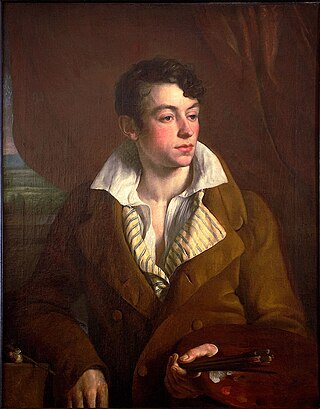Related Research Articles

Pietro Alessandro Gaspare Scarlatti was an Italian Baroque composer, known especially for his operas and chamber cantatas. He is considered the most important representative of the Neapolitan school of opera.

The House of Orsini is an Italian noble family that was one of the most influential princely families in medieval Italy and Renaissance Rome. Members of the Orsini family include five popes: Stephen II (752–757), Paul I (757–767), Celestine III (1191–1198), Nicholas III (1277–1280), and Benedict XIII (1724–1730). The family also included 34 cardinals, numerous condottieri, and other significant political and religious figures. The Orsini are part of the Black nobility who were Roman aristocratic families who supported the Popes in the governance of the Papal States.

Giuseppe Domenico Scarlatti was an Italian composer. He is classified primarily as a Baroque composer chronologically, although his music was influential in the development of the Classical style. Like his renowned father Alessandro Scarlatti, he composed in a variety of musical forms, although today he is known mainly for his 555 keyboard sonatas. He spent much of his life in the service of the Portuguese and Spanish royal families.

Federico Zuccaro, also known as Federico Zuccari, was an Italian Mannerist painter and architect, active both in Italy and abroad.

David Allan was a Scottish painter, limner, and illustrator, best known for historical subjects and genre works.

Fabrizio Dionigi Ruffo was an Italian cardinal and politician, who led the popular anti-Jacobin Sanfedismo movement.

Francis Napier, 10th Lord Napier and 1st Baron Ettrick, was a British polyglot, diplomat and colonial administrator. He served as the British Minister to the United States from 1857 to 1859, Netherlands from 1859 to 1860, Russia from 1861 to 1864, Prussia from 1864 to 1866 and as the Governor of Madras from 1866 to 1872. He also acted as the Governor-General of India from February to May 1872.

Sebastiano Conca was an Italian painter.

Domenico Fontana was an Italian architect of the late Renaissance, born in today's Ticino. He worked primarily in Italy, at Rome and Naples.

Jacob Philipp Hackert was a landscape painter from Brandenburg, who did most of his work in Italy.

Viviano Codazzi was an Italian architectural painter who was active during the Baroque period. He is known for his architectural paintings, capricci, compositions with ruins, and some vedute. He worked in Naples and Rome. He is known in older sources as Viviano Codagora or il Codagora.

Oliviero Carafa, in Latin Oliverius Carafa, was an Italian cardinal and diplomat of the Renaissance. Like the majority of his era's prelates, he displayed the lavish and conspicuous standard of living that was expected of a prince of the Church. In his career he set an example of conscientiousness for his contemporaries and mentored his relative, Giovanni Pietro Carafa, who became Pope Paul IV.

Matthias Stom or Matthias Stomer was a Dutch, or possibly Flemish, painter who is only known for the works he produced during his residence in Italy. He was influenced by the work of non-Italian followers of Caravaggio in Italy, in particular his Dutch followers often referred to as the Utrecht Caravaggists, as well as by Jusepe de Ribera and Peter Paul Rubens. He did not share the other Northern Caravaggisti's preference for humorous, and sometimes scabrous, genre scenes and elaborate decorative allegories but favored stories from the bible instead. He worked in various locations in Italy where he enjoyed the patronage of religious institutions as well as prominent members of the nobility.

Antonie or Anton Sminck Pitloo was a Dutch painter. His surname was originally Pitlo, but he added the extra "o" because he was often mistaken for an Italian while resident in Italy. In Italian he is also known as Antonio van Pitloo.

Giuseppe Mancinelli was an Italian painter of religious and historical scenes.

The School of Posillipo refers to a loose group of landscape painters, based in the waterfront Posillipo neighborhood of Naples, Italy. While some among them became academicians, it was not a formal school or association.

Camillo Guerra was an Italian painter of portraits and historical scenes.

Consalvo Carelli was an Italian landscape painter and painter of the School of Posillipo. He is also known as Gonsalvo Carelli.

Michele de Napoli was an Italian painter, mainly of grand manner historic and religious paintings in a Neoclassic style in Naples, Italy.

Francesco Saverio Altamura was an Italian painter, known for Romantic style canvases depicting mainly historical events.
References
- ↑ Lord Napier, page 39
- Napier, Lord Francis (1855). Notes on Modern Painting at Naples.. West Strand, London: John W. Parker and Son. pp. 39–46.
Domenico Morani.